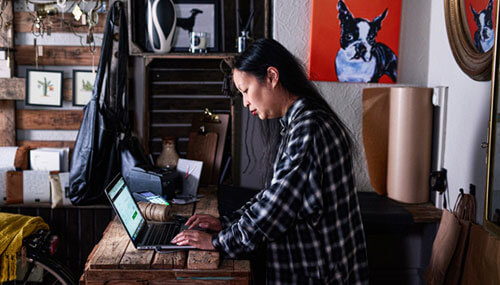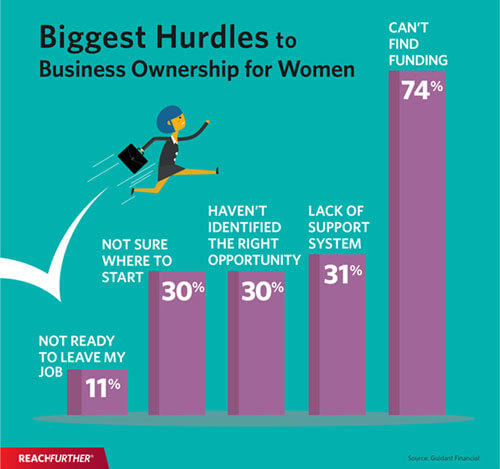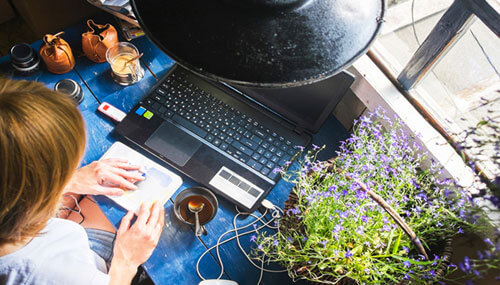Insights
SBA Loans for Women Entrepreneurs and Business Owners
By Melody Yuan

How SBA loans help empower women who want to start and maintain their business.
“I was terrified of taking out a loan,” says Monica LeBlanc, founder of Cardinal River Counseling. “I felt like it was such a big commitment and leap of faith. I couldn’t have done it without the support of my husband and local SBA office.” LeBlanc is not alone in feeling this way. Many women find the task of funding their business to be a daunting experience. Whether pursuing a lease, loan or a credit line, women in general were more pessimistic and believed that it would be hard to raise debt financing.
“Every day in the U.S., 800 women are starting businesses. It’s an incredibly rapid rate of growth, and while that’s really great, not only are these businesses receiving less funding—by and large—women earn less money than their male counterparts,” says Marni Brook, director of lending at Women’s Economic Ventures in Santa Barbara.
Women entrepreneurs and business leaders are taking the reins of business ownership today, with more than 11 million women-owned businesses in the U.S., compared to 4 million 30 years ago. “Forty percent of businesses are owned by women today,” says Cathy Huang, an SBA relationship officer at East West Bank, “but only one-in-four business loans were taken out by women.” Growing at a faster rate than the national average, employing nearly 9 million people and generating $1.7 trillion in revenue, women-owned businesses are not something to be overlooked. Yet, despite a record-breaking wave of women-led businesses flooding the market, many of them are underfunded, and women still face unique challenges and lack financial resources.
“Forty percent of businesses are owned by women today, but only one-in-four business loans were taken out by women.”

“Finding the right funding was one of the biggest challenges for me, because in our line of business, it really feels like you never have enough money to operate a company,” says Stacy Lin, co-founder and CEO of Century Tom Inc., an e-commerce company.
According to the U.S. Senate Committee on Small Business & Entrepreneurship’s 2017 study on tackling the gender gap, the biggest obstacles facing women included:
- A lack of women role models and mentors
- A gender pay gap that hurts the ability of women to become successful entrepreneurs
- Unequal access to funding and financial streams, leaving women with fewer credit options and access to capital.
In response to the growing demand of funding for women, the government, financial institutions and several nonprofits have taken steps to improve access to funding for women.
Shifting the mindset
“I think that the real big obstacle here for women business owners lies in the fear of borrowing money and their tendency to ask for less,” says Brook. “I get a lot of apologies from women, and there tends to be a feeling of guilt associated with needing to borrow money or even needing assistance from someone else.”

According to Fundera’s research, women who apply for loans typically ask for $35,000 less than male business owners. Microloans tend to be the preferred method of fundraising for women because of its smaller dollar amount and flexible repayment terms, based on the lender.
“The advice I typically give women is to encourage them to take the feeling of guilt off the table. I let them know that sufficient capital is one of the most important components of not only business success, but overall happiness as a business owner,” says Brook. “Lack of sufficient capital is one of the main reasons why a business doesn’t make it, and starting underwater is a common problem for women entrepreneurs.”
[Also read: How this Woman Entrepreneur Got on “Oprah’s Favorite Things.”]
While historical inequities in the financial landscape such as the credit gap between male and female entrepreneurs have contributed to the mindset of guilt, other advancements such as the passage of the Women’s Business Ownership Act of 1988 have also made strides in empowering women to own businesses.
“I think, as women, we tend to make decisions more cautiously,” says Lin. “To those looking to start their own business—I want to say, put your worries behind you and rise to the challenge.”
Resources to use for financial preparation
The U.S. Small Business Administration has resources catered specifically for women, from the Office of Women’s Business Ownership (OSBO) to the Women-Owned Small Businesses (WOSB) Federal Contracting program. Each district office organizes programs that help educate, mentor and provide funding for women-led businesses.
“I went to my local SBA office in Asheville [North Carolina] and took some financial literacy classes,” says LeBlanc. “It really helped me. Not only did the people there teach me how to maintain a balance sheet, they helped fine-tune my business plan and gave me a lot of confidence to start my own practice.” LeBlanc took out a $10,000 SBA loan to cover her financial basis and launch her business.
Lin also actively sought out mentorship and financial advice, as she attended a seminar led by Huang. “I met Cathy in New York City because she had a seminar that introduced business owners to various SBA loans,” says Lin. “By the end of it, I thought that the SBA was the best option, and I was qualified for the loan. Going up to Cathy was the best decision since she helped me a lot throughout the process. She gave me a lot of information and made sure I had everything we needed to secure the loan.”
“In order to get the funding you need, you must get your financial health in order,” says Brook. “And by that, I mean have a solid plan and be prepared to articulate key points of that plan.” A few questions Brook thinks are beneficial for business owners to consider include:
- What are you trying to achieve?
- How much money do you really need to achieve this goal?
- How does the amount of money that you need tie into this plan?
“Have all your financial documents in a flash drive or a folder on a computer, so that when it’s time to apply that plan or talk to an investor, you have everything ready,” says Brook. “Investors are going to want to see this information, and the more organized and thoughtful you can be in iterating the plan, the more successful you’ll be at getting the funding because they’ll have more confidence in you. Perception is critical.”
Once a preliminary plan and strategy has been determined, sharing it with a credible professional to help look over those documents could be the factor that determines whether the business flops or flies.

"Have all your financial documents in a flash drive or a folder on a computer, so that when it’s time to apply that plan or talk to an investor, you have everything ready."
What makes success stories
“My business today generates about $4 million to $5 million in sales annually,” says Lin. Since launching a few years ago, Lin’s e-commerce business has grown to encompass two distinct brands: Soeos, a retail brand selling Asian sauces and spices, and Heivy, a beauty and nutrition supplement brand.
“The reason why I wanted to start a business is because I’m a mom with three kids,” says Lin. “Starting an e-commerce business made sense to me because I could work from home and still take care of my 4-year-old, 2-year-old and youngest baby.”
According to the National Women’s Business Council (NWBC), many women start their own business out of necessity, due to either resource deficiencies in the work place, work-life conflict or gender discrimination. “At first, it wasn’t easy starting and running a business,” says Lin. “But now, our collagen beverage from Heivy is our best-selling product in its genre online. It’s the number-one selling collagen drink on Amazon, and it’s popular among our consumers.”
“One story that comes to my mind through our loan program is of a client who started a mobile medical scrubs retail business,” says Brook. “She had noticed that all the scrubs were very ugly with limited personalization options. She found a niche market and came to us looking for a loan to get her business going.” Five years later, her business is flourishing.
[Also read: SBA Loans 101: Frequently Asked Questions]
“Since then, we’ve given her two additional loans, and she now has three actual stores. Her revenues are growing every year, and she’s at the half-a-million-dollar mark in sales, employs a dozen people, and has an incredible business vision,” says Brook. The client’s access to capital allowed the business to move forward.
“I’m confident that more women are starting to not be afraid to think bigger,” says Brook. “They’re thinking beyond the bare minimum funding of keeping the light on the next day. They’re thinking more about the end goal.”
“I just kept repeating the mantra: nothing ventured, nothing gained,” says LeBlanc. “You just have to believe in your business goals and capabilities.” Now two years into starting her own practice, she has several regular clients and has also expanded her counseling service to include couples therapy and workplace conflict resolution. “I’ve definitely had my ups and downs, and I’m not done learning,” adds LeBlanc. “But I’m still here, running my business and making it happen.”
“Getting access to funding isn’t really about who you are or what motivated you to start something,” says Brook. “It’s about wanting to make money while doing something that you love. We need to start tweaking the conversation, because the reality is, doing what you love is wonderful—but making money while you’re doing it is even better.”
Subscribe to the Reach Further Newsletter
Get inspiring stories in your inbox every month.

